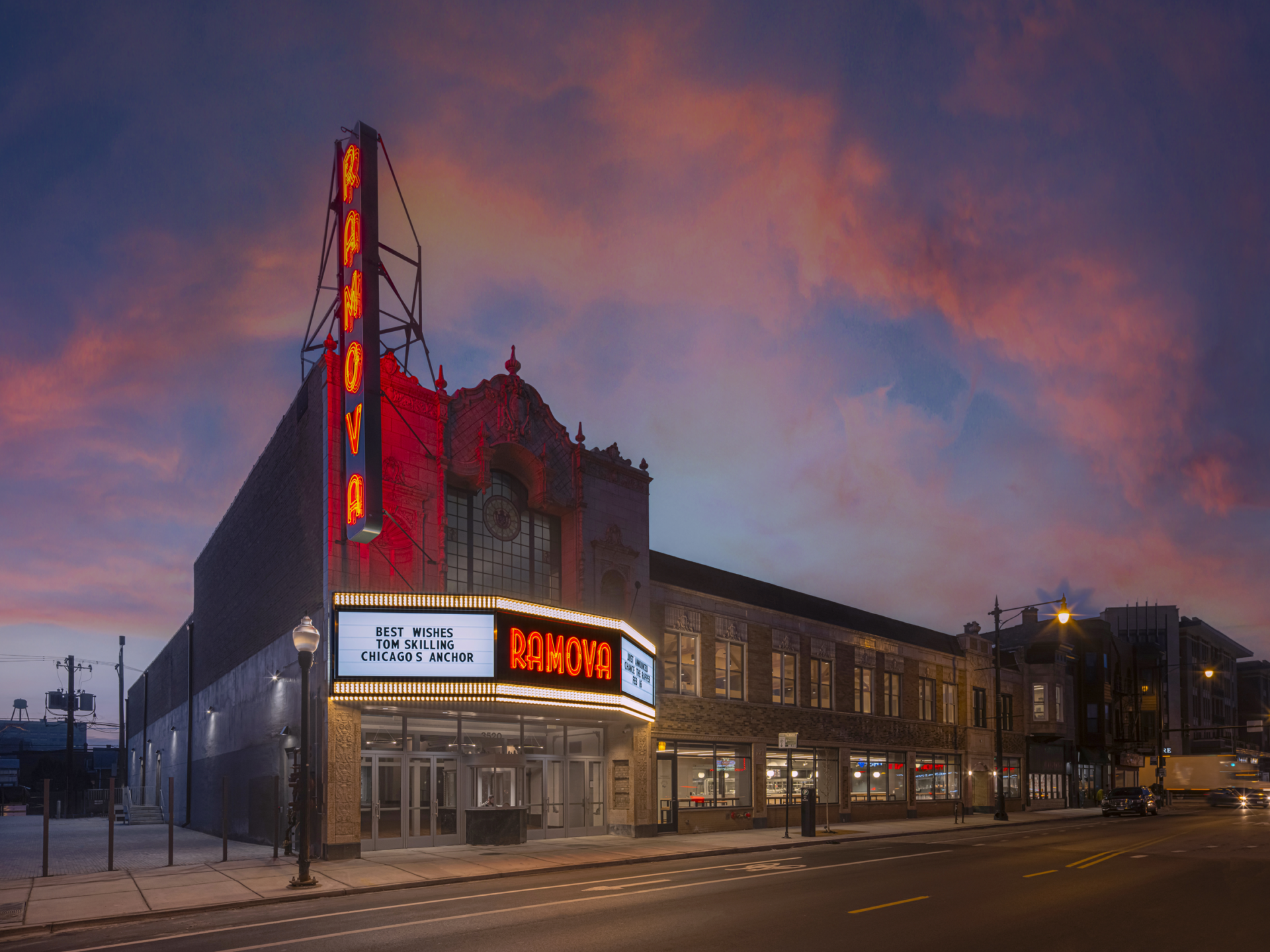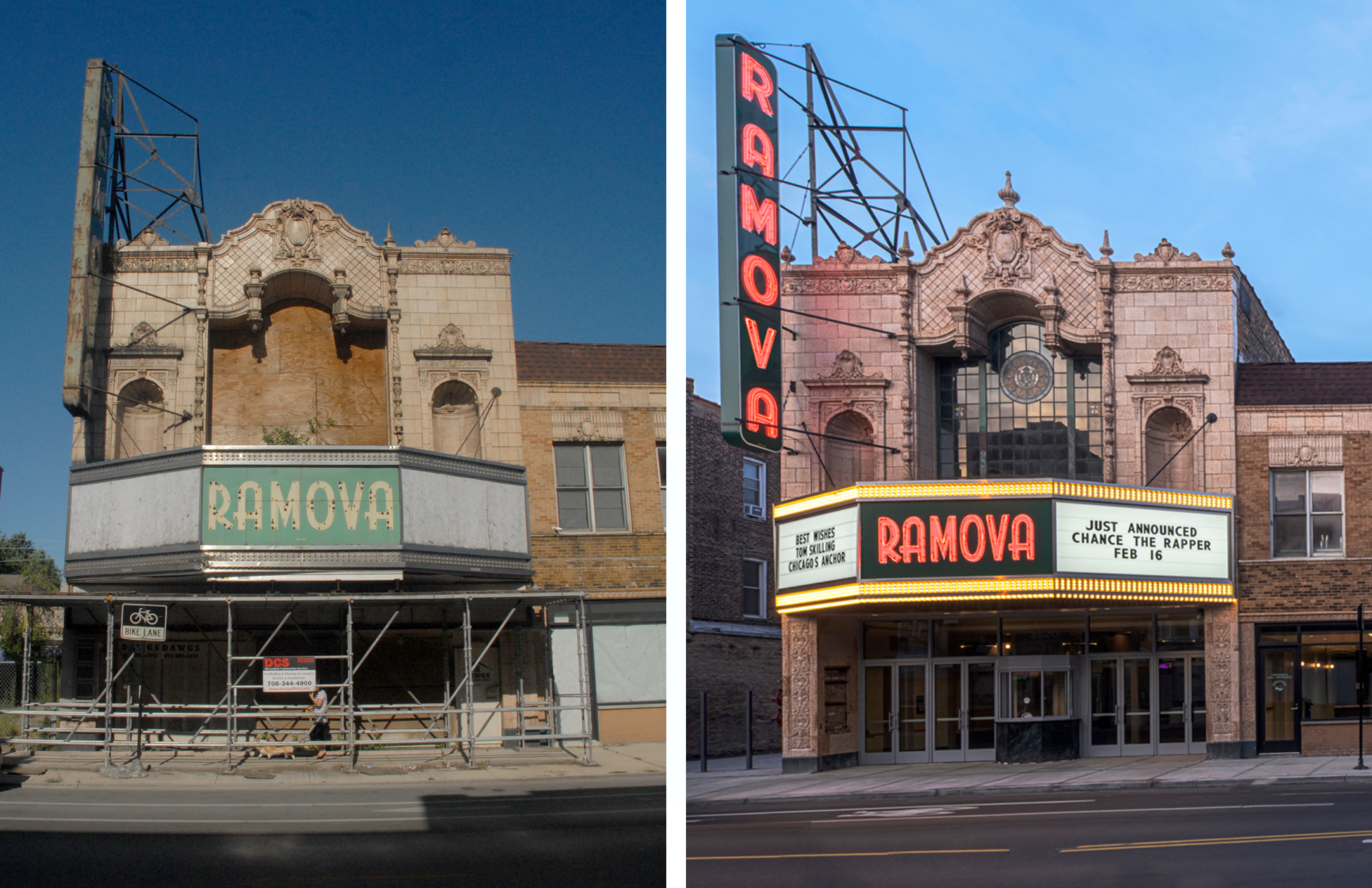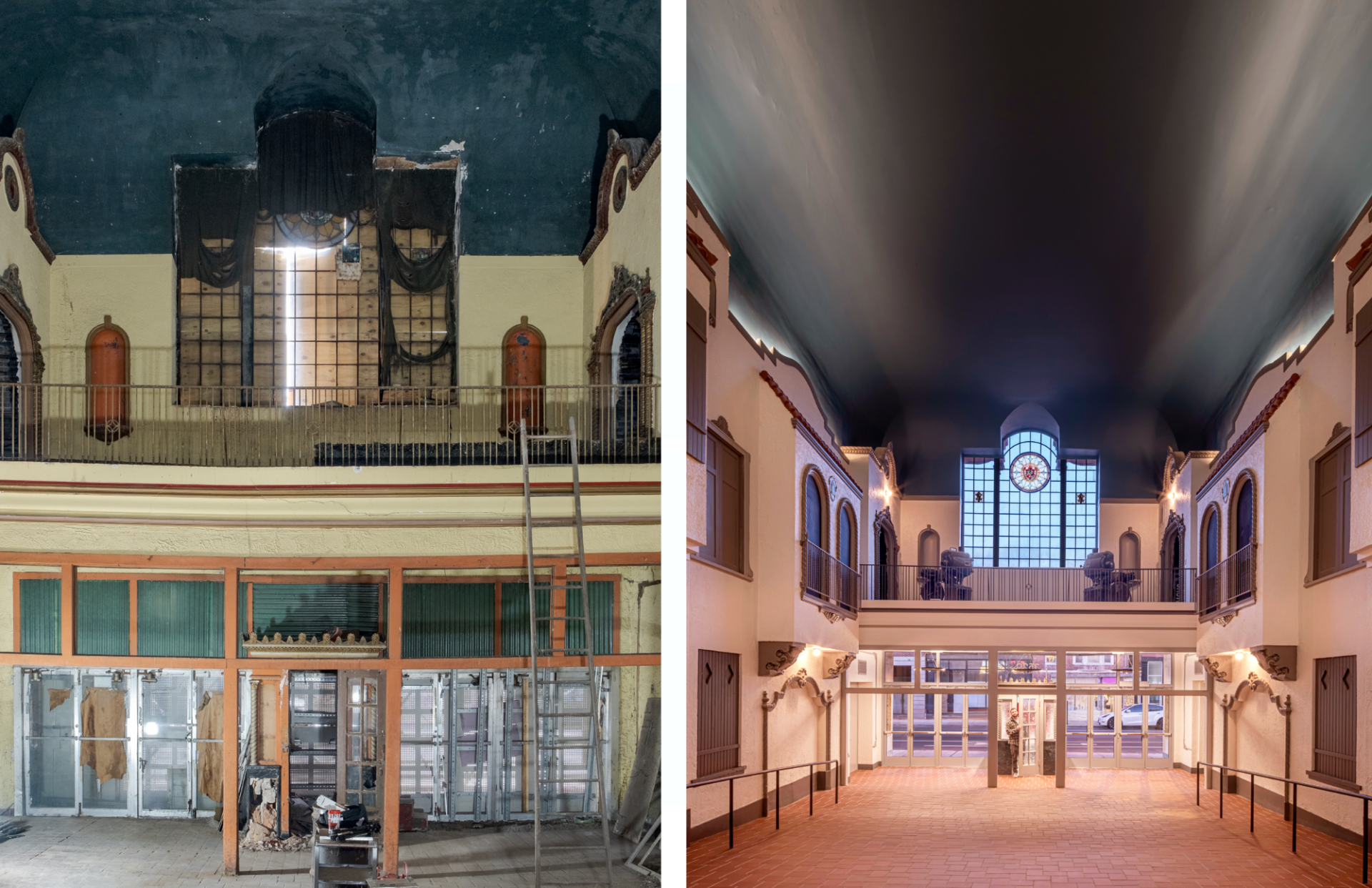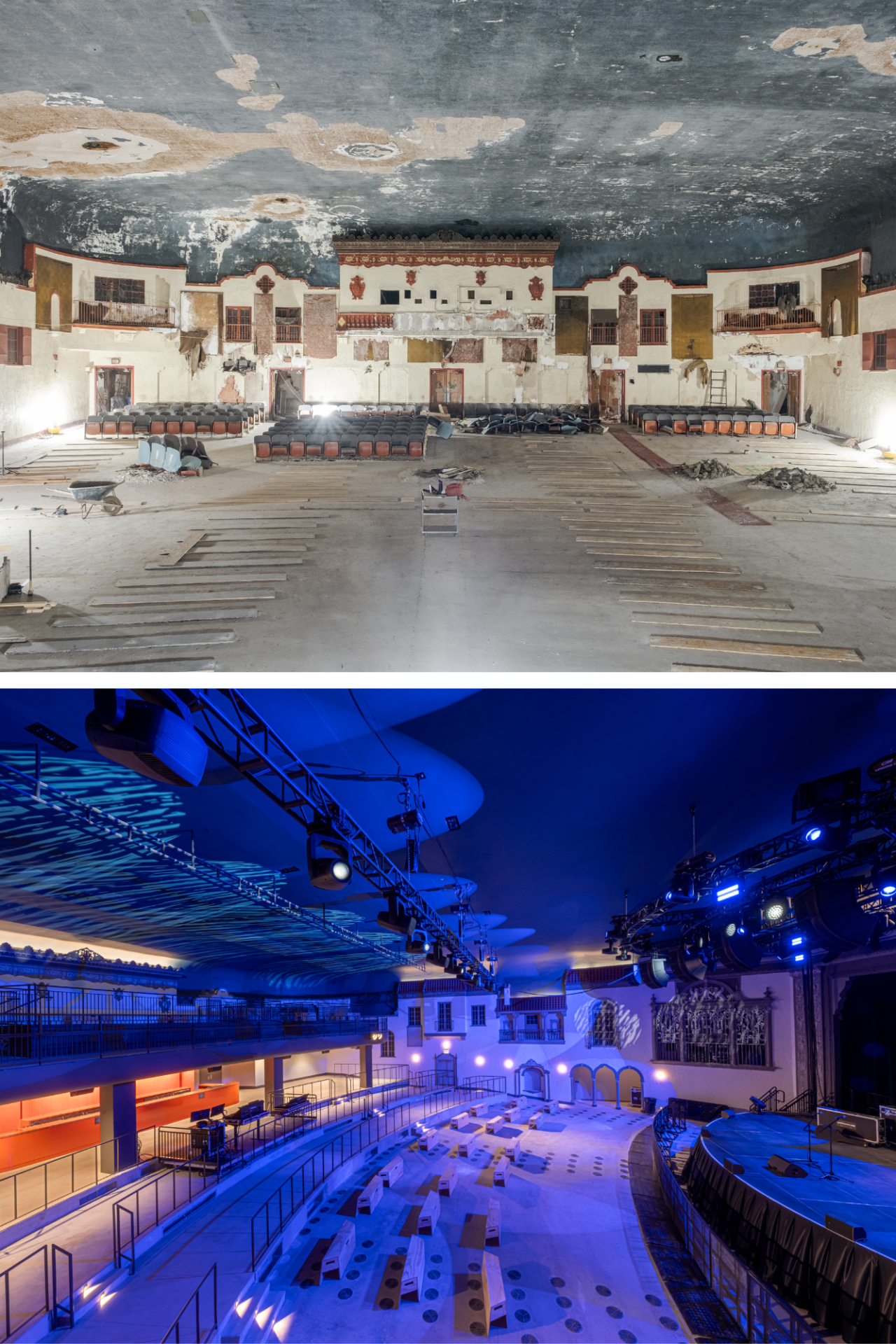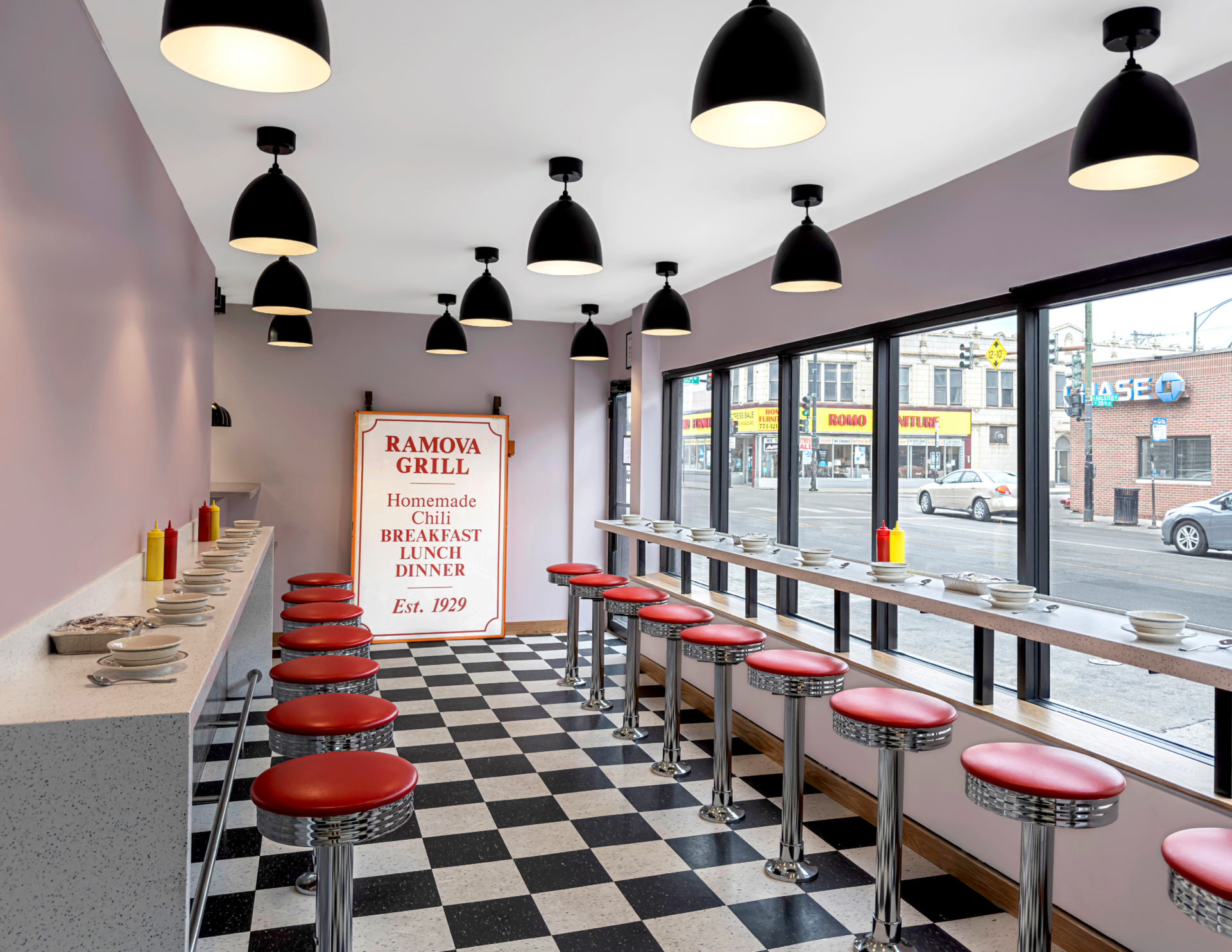2024 Landmarks Illinois Richard H. Driehaus Foundation Preservation Award for Adaptive Use
In 2017, the husband-and-wife team, Tyler and Emily Nevius initiated the reimagining, rehabilitation and adaptive reuse of the Ramova Theatre. Designed by architect Myer O. Nathan in the then-popular Atmospheric style with Classical- and Spanish Revival-style detailing, the Ramova served as the primary movie theater in Chicago’s Bridgeport neighborhood between 1929 and 1950. It shuttered its doors in 1985 and sat vacant until the Nevius’ stepped in. The project brought together the community, with dozens of local investors as well as big-name South Side natives like Quincy Jones, Jennifer Hudson and Chance the Rapper contributing a total of $4 million to the preservation effort. The adaptive reuse resulted in an 1,800-person live music venue and destination space featuring a craft brewery, taproom and grill. In addition to hosting live performances, the restored Ramova Theatre welcomes the community through educational programs and initiatives.

